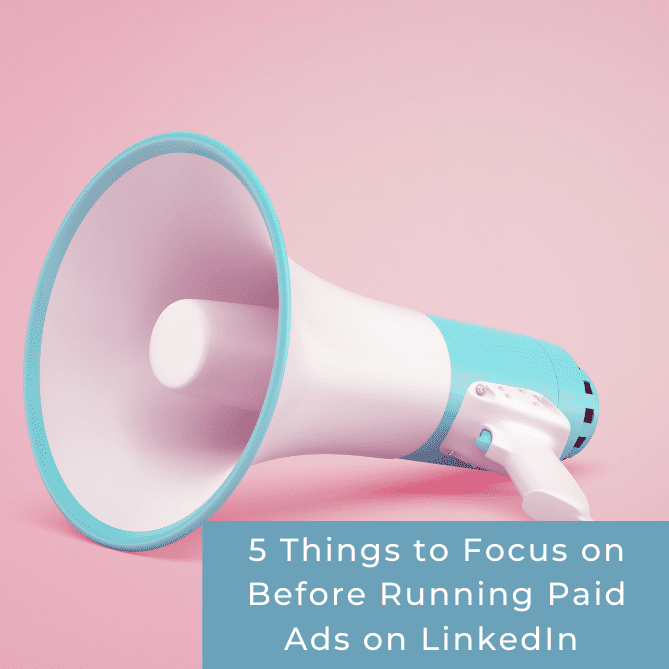Understanding and leveraging LinkedIn can transform the way your business operates. LinkedIn is a powerhouse; as a leadership team, you need to ensure your company gets the most out of the platform. As we always say, It’s Business, Not Social.
With our expertise and over 35,000 hours of directly working within LinkedIn and its suite of products, we have found that leadership teams need to consider five critical concepts to ensure they are making the right decisions for their revenue and recruiting teams.
- LinkedIn is second only to your CRM.
- LinkedIn provides you access to over 12 billion+ first-party data points.
- LinkedIn is not magic.
- LinkedIn is a catalyst for business growth.
- LinkedIn needs alignment with your business, and success needs to be defined and measured.
Your Leadership + CRM needs LinkedIn.
LinkedIn has evolved from a social networking site to an essential business platform, boasting unmatched professional data collection. In 2022, the content for Dreamforce and INBOUND focused on LinkedIn Sales Navigator and Sales Insights being second only to your CRM. In our opinion, it is closer to 1a and 1b. There is a reciprocal relationship between your CRM and Sales Navigator. The actionable insights and signals that Sales Navigator provides – the first-party data add invaluable value to the data you’ve collected in your CRM.
In a perfect world, you have a CRM like Microsoft Dynamics or Salesforce with the writeback integration between Sales Navigator and your CRM. Constructing a systematic process with your CRM and Sales Navigator to equip your revenue teams with the correct data and efficiencies is necessary.
Equipping your teams with the best available data leads to outcomes. According to a study on CRM data management by Validity, 44% of companies surveyed say they lose over 10% of annual revenue due to low-quality CRM data. Many factors contribute to the data quality of a CRM. LinkedIn’s suite of products can assist with closing that gap. The automatic updates of job changes and connectivity to your team and organization add value to your CRM.
Consider this: someone on the leadership team or the new VP of Sales at a top target has a connection to a member of your leadership team. They used to belong to the same country club. How impactful would it be to get an introduction vs. countless cold emails and calls?
Your CRM could never provide you with that information— there is power in the real-time updates to top clients, targets, and prospects.
What is the value of 12+ Billion Data Points?
Have you, your leadership team or your company at large collected data from millions of business professionals and thousands of companies worldwide? LinkedIn has.
LinkedIn boasts 20 years of first-party data collected from its user base. With over 12 billion+ data points, you can identify potential business partners, clients, and talent pools. Correctly navigating the platform can give your team insights into market trends, industry benchmarks, and how to approach targets, which can be invaluable in driving business outcomes.
With data being the most valuable asset an organization has, how do you not jump at the prospect of being able to use what LinkedIn has collected for the better part of two decades? While you most likely only require some of the data LinkedIn offers, it can be a game-changer for your niche or focus.
These data points are not limited to aggregating the public-facing data on every profile, post, advertisement, or company page. LinkedIn collects a great deal of data behind the scenes, including how to interact, length of messages, best times to reach out for conversion, and how you should reach out to that individual. The variables are endless, and what you can do with them is powerful.
You can access this data through different product features and endless resources that LinkedIn Talent, Sales, and Marketing Solutions consistently share with members.
LinkedIn is not magic. However, it can become an “Easy Button.”
Even with all of the platform’s capabilities, LinkedIn is not a magic platform that will solve your business challenges single-handedly. While the platform undoubtedly holds great potential, your teams can only expect results with concerted effort and a clear understanding of how it works.
Leadership needs to invest time and resources in understanding how LinkedIn integrates into their business, and managers can implement them into daily workflows for their teams. Implementing the right LinkedIn features, best practices, and strategies are not a one size fit approach. The right fit and timing will maximize LinkedIn’s full potential for your business.
The idea that LinkedIn is magic is a myth. LinkedIn positions and sells its products as ready-to-go out of the box. All you need to do is buy a license and watch an hour-long session on what button to push, and instantly, sales, leads, and new hires will come flying through the door. Unfortunately, this is unrealistic.
Spending over 35,000 hours on the platform, we understand the level of integration and strategy needed for success and adoption.
It is easy to consider LinkedIn magic when you hear of all the success stories people have with the platform. “It worked for x company in my mastermind group or business association. Why wouldn’t it work for me?” How they reached that outcome is unknown- many variables can impact success.
You want to believe it takes minimal time and effort to be successful because the thought and consideration of what you need to do from a resource allocation piece internally are just too much of a burden.
While it’s not magic with the right process and strategies, LinkedIn does work. Momentum builds, and success usually influences those who did not want to invest the time upfront or didn’t want to be “on social media.” to take another look.
LinkedIn significantly grows revenue, hiring, and brand recognition when leveraged correctly. Smart integration of LinkedIn in your marketing, branding, and recruitment strategies can result in far-reaching benefits. Onboarding LinkedIn experts, Sales Navigator tools, and employee advocacy programs can all contribute to your success in harnessing LinkedIn’s full capabilities.
When we think of LinkedIn as a catalyst for business growth, we specifically talk about leveraging your collaborative network to attract and retain ideal clients and top prospects and understanding when your targets are ready to buy. Understanding the ready state to buy is critical. Research by the Ehrenberg-Bass Institute notes that only 5% of B2B buyers are in-market for a product at any one time.
Your company’s collective network shows your potential impact for referrals – what every business and salesperson loves. Referrals lead to higher-quality business opportunities and more efficient revenue generation and recruiting processes. By cultivating and understanding the connectivity within your organization to the market, you start to connect the dots and make LinkedIn tools more impactful for your business.
Turn LinkedIn into your “easy button.” There is no need to do ALL the heavy lifting yourself.
When LinkedIn released its “Deep Sales Advantage Ebook,” it highlighted a business that, through leveraging LinkedIn, achieved a 20% increase in win rate and a 39% increase in average deal size. Interestingly, these are not uncommon results when fully integrating LinkedIn into your sales activities. They focused on buyer signals and understanding where their buyers were in the life cycle. LinkedIn provided the insight to enable them to focus on those in a ready state to buy while continuing to market and play the long game with those not prepared.
Often, businesses misuse and misalign LinkedIn with their overarching strategies, and consequently, they need help to measure the platform’s success effectively. To avoid this pitfall, leadership must set clear, measurable goals and integrate LinkedIn with other critical tools in the tech stack. By aligning LinkedIn with the correct strategies and analyzing ROI regularly, businesses can course-correct in real-time and adapt to any changes in the platform or market.
At a minimum, leverage some of LinkedIn’s built-in KPIs as a starting point. However, these are more generic and don’t show the complete picture. There are a lot of surface-level and vanity metrics that would indicate “success” on a tactical level in LinkedIn. Still, when you dig in, you realize there needs to be significantly more to generate business opportunities.
Quick general examples of a solid strategic metric would be the percentage of a network that includes clients and prospects or the number of connections in target personas within target and client accounts.
LinkedIn is not social media—it’s a goldmine of information that, when unlocked, can revolutionize how you do business. As a leader, it is crucial to understand LinkedIn’s essential functions, its importance in integrating into your business, where it ranks in your current tech stack, and how to harness its capabilities strategically. Invest in training and strategy to enable your teams to make the most of LinkedIn and watch how it catapults your brand, hiring, and revenue.
You have to put in the effort to make it work for you, but once it does, it will make your next big deal, marketing campaign, or recruiting for a key position far easier and more achievable. The LinkedIn landscape is vast and complex, but once you have a solid direction and the proper infrastructure, there’s no limit to its impact on your business.
Learn more about Intero Advisory and skip over to our blog for more on LinkedIn strategy.




